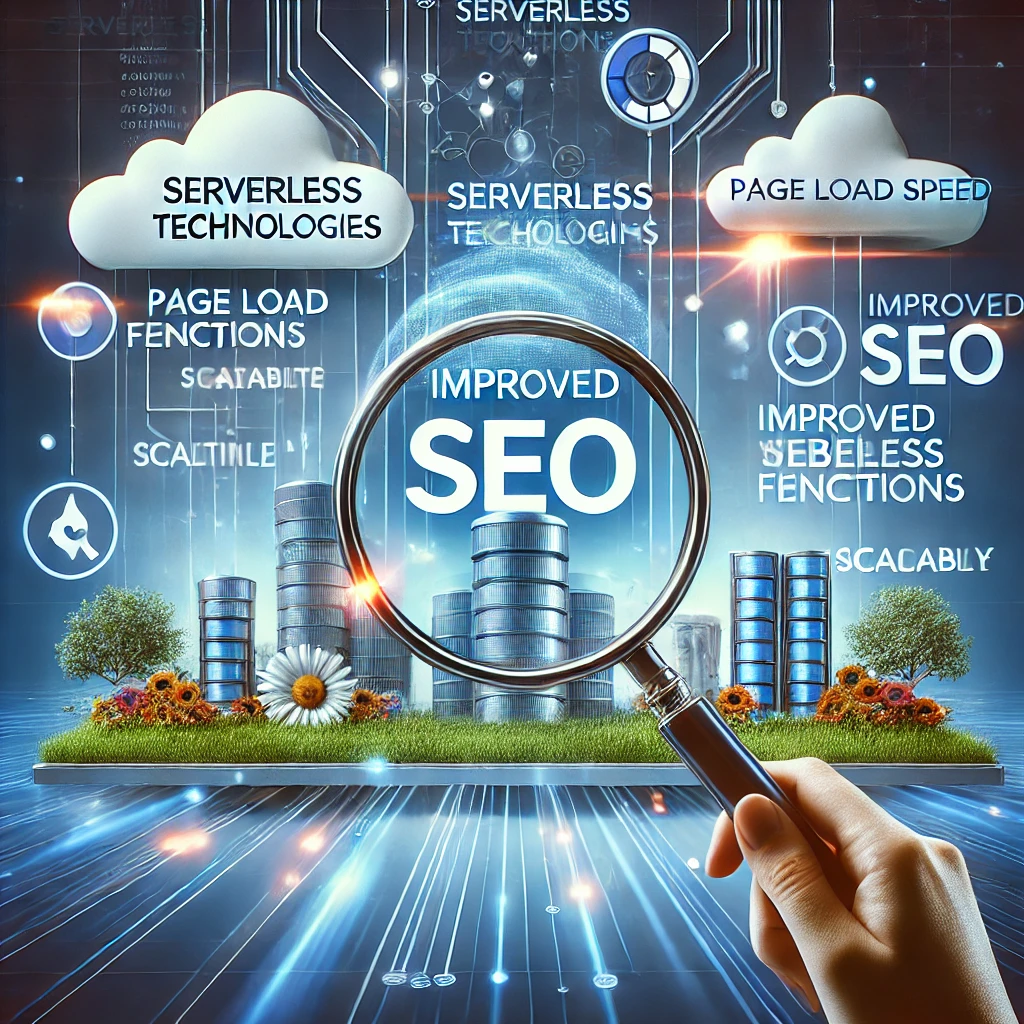Serverless computing is revolutionizing web development, offering businesses a scalable and cost-efficient way to manage websites and applications. But how does this shift impact technical SEO? As websites move away from traditional servers, the way search engines crawl, index, and rank them is also evolving.
In this blog, we’ll explore how serverless technologies influence technical SEO, the benefits and challenges, and how businesses can optimize their websites to stay competitive in search rankings.
What is Serverless Technology?
Serverless computing allows developers to run code without managing servers. Cloud providers like AWS Lambda, Google Cloud Functions, and Azure Functions handle infrastructure, scaling, and maintenance.
Key Features of Serverless Computing:
- No Server Management: The cloud provider handles provisioning and scaling.
- Auto-Scaling: Functions execute as needed, reducing downtime.
- Cost-Effective: You pay only for execution time.
- Event-Driven Execution: Code runs in response to specific events, like API requests or database changes.
How Serverless Affects Website Performance and SEO:
Serverless technology enhances site speed, uptime, and scalability, which are critical SEO ranking factors.
| SEO Factor | Impact of Serverless |
|---|---|
| Page Load Speed | Faster load times due to efficient resource allocation. |
| Uptime & Reliability | Auto-scaling ensures high availability and minimal downtime. |
| Security | Built-in security reduces vulnerabilities and bot attacks. |
| Indexability | Proper implementation ensures search engines can crawl pages. |
How Serverless Technologies Impact Technical SEO
1. Improved Page Load Speed & Core Web Vitals
Google prioritizes fast-loading websites in search rankings. Serverless functions optimize speed by:
✅ Reducing server response time (TTFB)
✅ Optimizing dynamic content delivery
✅ Leveraging CDN-based serverless hosting (e.g., Cloudflare Workers, AWS Lambda@Edge)
Best Practices:
- Use Edge Computing to serve content closer to users.
- Optimize assets (images, CSS, JS) using serverless processing.
- Implement lazy loading and caching strategies.
2. Better Scalability Without SEO Downtime
Serverless platforms scale automatically, handling traffic spikes without crashing. This prevents downtime, ensuring:
✅ Search engines always find an accessible site
✅ Users get a seamless experience
Best Practices:
- Use load balancers for global traffic distribution.
- Implement status monitoring tools to detect failures.
3. Serverless and JavaScript SEO Challenges
Many serverless websites rely on JavaScript frameworks (React, Angular, Vue). However, search engines struggle with JavaScript rendering.
Challenges:
❌ Search engines may delay indexing JS-heavy pages.
❌ Improper implementation can lead to empty SERP snippets.
Solutions:
✅ Use pre-rendering or server-side rendering (SSR) for dynamic pages.
✅ Implement structured data for better crawlability.
✅ Use serverless functions to generate static HTML snapshots.
4. Serverless APIs and SEO-Friendly URL Structures
APIs are commonly used in serverless apps to fetch content dynamically. However, improper API implementation can cause:
❌ Fragmented URLs (e.g., example.com/#/page instead of example.com/page)
❌ Unindexed pages due to missing proper meta tags
Best Practices:
- Ensure API-generated pages have canonical URLs.
- Use server-side rendering (SSR) instead of client-side rendering (CSR).
5. Enhanced Security to Prevent SEO Attacks
Serverless platforms offer built-in security, reducing vulnerabilities like DDoS attacks and SQL injections.
SEO Benefits:
✅ Prevents downtime from cyberattacks
✅ Protects from negative SEO tactics (e.g., spam attacks, scraping)
Best Practices:
- Use serverless firewalls to block malicious traffic.
- Implement rate limiting to prevent bot abuse.
6. SEO-Friendly Serverless Logging & Monitoring
Serverless functions generate logs, which are crucial for SEO error tracking.
How This Helps:
✅ Detects crawl errors (404s, 500s)
✅ Monitors site downtime
✅ Analyzes search bot activity
Best Practices:
- Use AWS CloudWatch, Google Stackdriver, or Datadog for monitoring.
- Set up alerts for slow-loading pages and broken links.
7. Serverless and Voice Search Optimization
With the rise of voice search, serverless AI-driven chatbots and natural language processing (NLP) APIs are improving user experiences.
SEO Impact:
✅ Voice assistants prefer fast-loading, serverless websites
✅ AI-based chatbots improve engagement metrics (low bounce rates)
Best Practices:
- Implement structured data for featured snippets.
- Use serverless NLP APIs to optimize content for natural language queries.
Challenges of Serverless for SEO (and Solutions)
| Challenge | Solution |
|---|---|
| JavaScript rendering issues | Use server-side rendering (SSR) or pre-rendering. |
| Slow API calls | Cache API responses using serverless edge computing. |
| Dynamic URL issues | Implement canonical tags and proper URL structures. |
| Security risks | Use serverless security features like IAM roles. |
| Limited logging | Enable cloud-based SEO monitoring. |
Conclusion
Serverless technology is reshaping technical SEO by improving site speed, uptime, and scalability. However, businesses must implement SEO-friendly serverless strategies to avoid common pitfalls like JavaScript rendering issues and API-based indexing problems.
By leveraging CDN-based serverless hosting, pre-rendering content, and optimizing API calls, businesses can create fast, scalable, and SEO-optimized websites that rank higher in search results.
FAQs
1. Does serverless hosting improve SEO?
Yes. Faster load times, better uptime, and automatic scaling enhance search rankings.
2. Can JavaScript-heavy serverless sites hurt SEO?
Yes, if not optimized. Use pre-rendering or SSR to ensure search engines can crawl content.
3. How does serverless impact Core Web Vitals?
It improves Time to First Byte (TTFB), First Contentful Paint (FCP), and Largest Contentful Paint (LCP) by reducing latency.
4. Should I use serverless for all web projects?
Not necessarily. Static sites benefit most, while complex applications may need hybrid solutions.
5. What’s the best serverless platform for SEO?
Cloudflare Workers, AWS Lambda@Edge, and Google Cloud Functions are great for performance and scalability.

